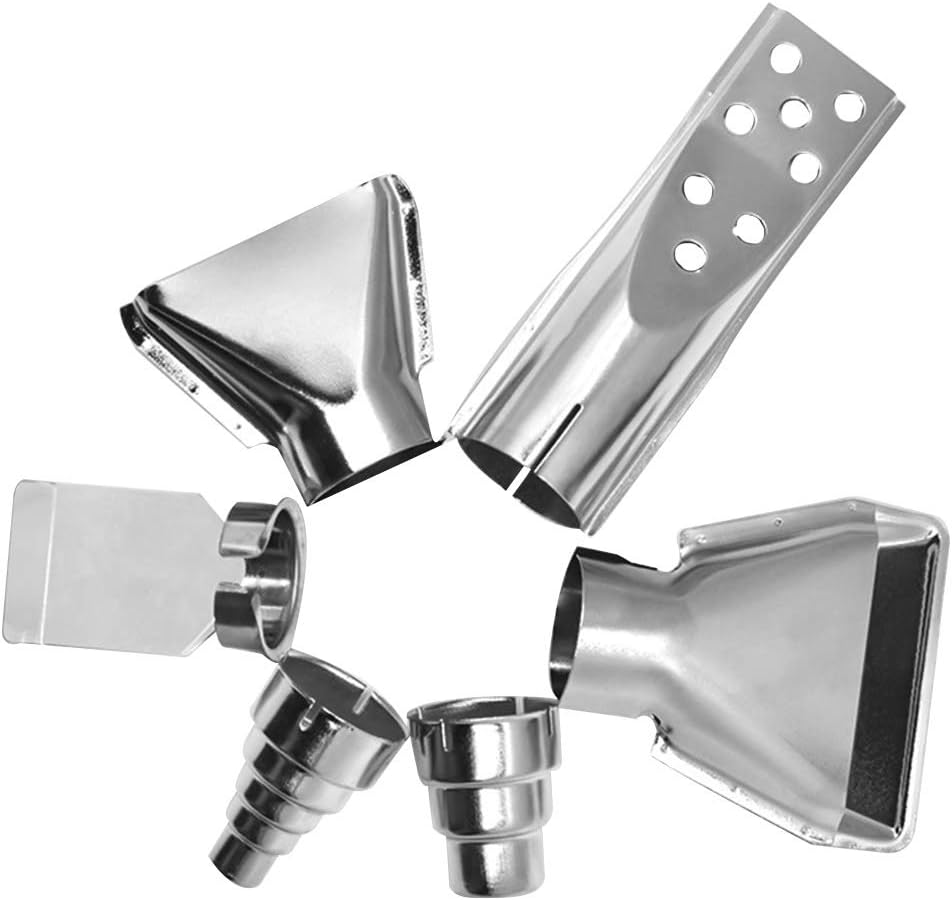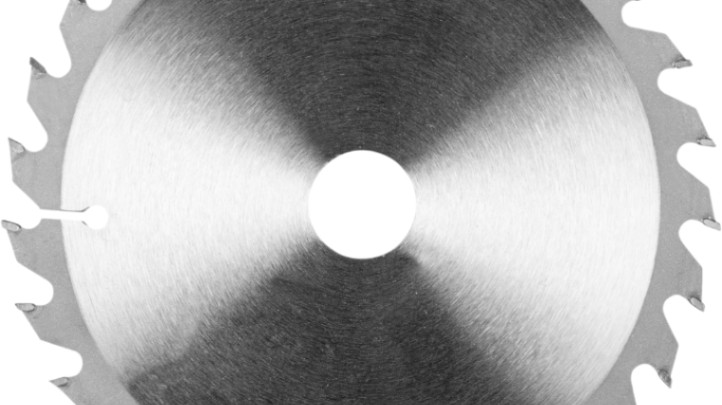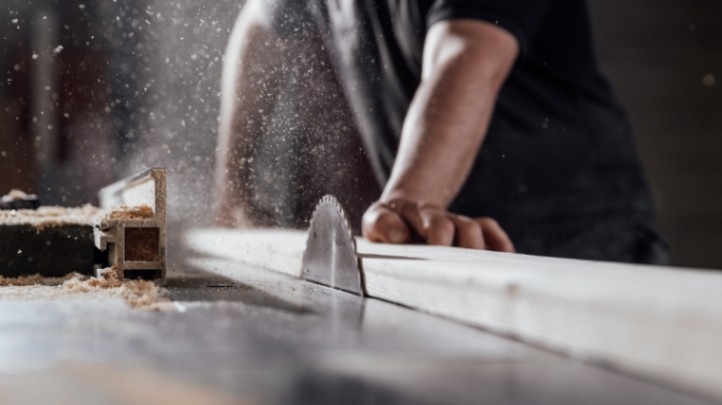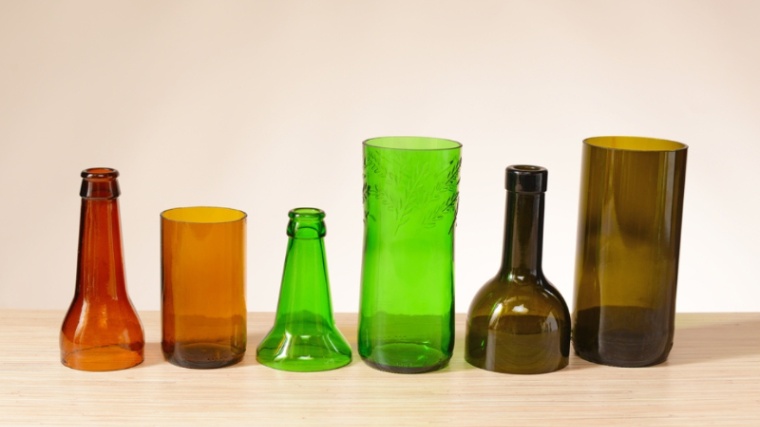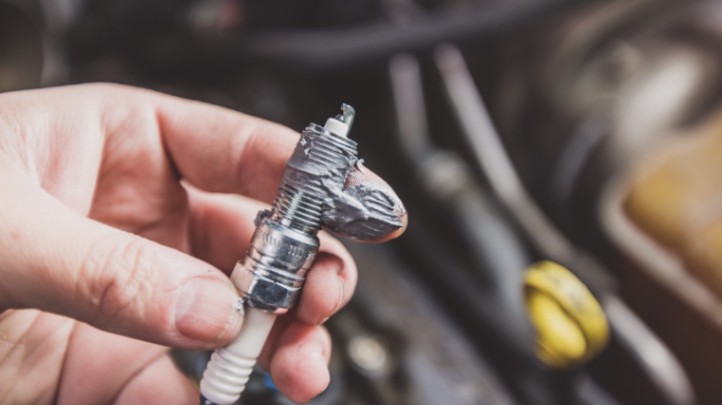Heat gun accessories can make all the difference in completing various tasks quickly and efficiently. This article will explore the top 7 accessories to use with your heat gun and how to choose the right one for your specific project.
Also Read: Types Of Heat Guns: Which Type Is Right For You?
Best Heat Gun To Remove Stickers: Reviews, Guide
1. Introduction
When using heat guns, it’s essential to have the right accessories. But what exactly are heat gun accessories, and why are they so crucial?
What heat gun accessories and why they are important
Heat gun accessories are additional tools you can use in conjunction with your heat gun to make your work easier and more efficient. They come in various shapes and sizes and are designed to help you achieve better results when working with heat guns.
But the importance of heat gun accessories is a concept that has been introduced previously. Their use dates back to the early days of heat guns. The earliest heat gun accessories were mostly makeshift items created by artisans to assist them in their work. These accessories were simple yet effective and included extension nozzles, scrapers, and reflectors.
History of heat gun accessories
Over time, as heat gun technology advanced, so did the accessories that accompanied them. Today, countless heat gun accessories are available, ranging from specialized nozzles for specific tasks to digital controllers that provide precise temperature control.
In conclusion, heat gun accessories are essential to any heat gun user’s toolkit. Whether you’re a DIY enthusiast or a professional craftsman
Types of Heat Gun Accessories
- Nozzle attachments
- Deflector attachments
- Reflector attachments
- Spreader attachments
- Scraper attachments
- Paint removal attachments
- Welding attachments
3. Nozzle Attachments
Nozzle attachments are a crucial component when it comes to heat gun accessories. Nozzle attachments are designed to direct hot airflow, allowing you to focus heat in a specific area. This is particularly useful when working with materials that require targeted heating, such as bending or shaping plastic or removing paint from a small area.
Types of nozzle attachments and their uses
Several nozzle attachments are available, each with unique features and use. The most common types of nozzle attachments include:
- Cone Nozzle: This nozzle attachment is perfect for tasks requiring a precise, concentrated heat flow. The cone shape allows you to direct the heat to a small, focused area, making it ideal for tasks like thawing frozen pipes or removing rusted bolts.
- Reflector Nozzle: This nozzle attachment is designed to direct the heat in a specific direction, allowing you to heat a larger area more precisely. It’s perfect for heating, shrink wrap, or bending PVC pipes.
- Reduction Nozzle: This nozzle attachment is used to reduce the size of the hot air flow, allowing you to heat a smaller, more concentrated area. It’s ideal for tasks like welding small components or soldering.
- Flat Nozzle: This nozzle attachment is designed to distribute heat evenly over a larger area, making it ideal for drying paint or thawing frozen pipes.
Using the proper nozzle attachment for the job can save time, reduce waste, and achieve more consistent results. With so many different types of nozzle attachments to choose from, it’s essential to understand the unique features and uses of each one to get the best results.
4. Deflector Attachments
When it comes to heat gun accessories, deflector attachments are another essential tool. These attachments are designed to help you direct hot air flow, allowing you to work more efficiently and achieve better results. Deflector attachments are handy when you heat a large surface area, such as when removing paint from a wall or drying a large flooring section.
Types of deflector attachments and their uses
Several deflector attachments are available, each with unique features and use. Here are some of the most common types of deflector attachments:
- Fish Tail Deflector: This type of deflector attachment is designed to direct the heat in two directions, making it ideal for heating large flat surfaces. The fishtail deflector is often used to remove paint from walls or dry large flooring sections.
- Spoon Deflector: This type of deflector attachment is shaped like a spoon, allowing you to direct the heat in a specific direction. The spoon deflector is often used for tasks that require more precision, such as when working with PVC pipes or bending plastic.
- Hook Deflector: This type of deflector attachment is designed to hook onto the edge of a surface, allowing you to direct the heat at a specific angle. The hook deflector is often used to remove paint or thaw pipes.
- Round Deflector: This type of deflector attachment is shaped like a circle and designed to direct the heat in a wide area. The round deflector is often used to dry paint or thaw frozen pipes.
By using the proper deflector attachment for the job, you can work more efficiently and achieve better results. With so many different types of deflector attachments available, it’s essential to understand the unique features and uses of each one to get the best results.
5.Reflector Attachments
When it comes to heat gun accessories, reflector attachments are a vital component that is often overlooked. These attachments are designed to amplify and direct heat output, allowing users to focus heat on a specific area for maximum efficiency.
But what exactly are reflector attachments? Simply put, these are accessories designed to attach to the nozzle of a heat gun. They are typically made of metal and are designed to reflect heat in a particular direction. By using a reflector attachment, you can increase the temperature of a specific area, making it easier to remove paint, shrink wrap, or even thaw pipes.
Types of reflector attachments and their uses
Several types of reflector attachments are available on the market, each with its unique set of features and benefits. Some of the most common types include:
- Cone Reflectors: These attachments are designed to focus heat on a small, concentrated area. They are perfect for tasks that require precision, such as soldering or welding.
- Flat Reflectors: As the name suggests, these attachments are flat and are designed to distribute heat evenly over a large surface area. They are ideal for tasks such as paint stripping or thawing frozen pipes.
- Specialty Reflectors: These attachments are designed for specific tasks, such as bending PVC pipes or heat-shrinking tubing.
With the proper reflector attachment, you can make quick work of even the most challenging heat gun tasks. No matter what type of reflector attachment you choose, it is vital to use it properly to ensure maximum efficiency. Always read the manufacturer’s instructions before use and follow all safety precautions.
6. Spreader Attachments
Spreader attachments are essential tools to spread or disperse materials, such as salt, sand, and fertilizer, over large areas quickly and efficiently. These attachments are designed for tractors, trucks, and ATVs. They are commonly used in landscaping, agriculture, and construction industries.
Types of spreader attachments and their uses
Spreader attachments are available in various types, each designed for a specific purpose. The most common types of spreader attachments are:
- Broadcast Spreaders: These spreaders are used to distribute materials over a wide area, making them ideal for large lawns, sports fields, and golf courses.
- Drop Spreaders: Drop spreaders are used for precise applications, such as fertilizer on small gardens, lawns, and driveways.
- Liquid Sprayers: Liquid sprayers apply herbicides, insecticides, and other liquid materials. They are ideal for commercial agriculture and landscaping applications.
- Rotary Spreaders: Rotary spreaders are used for the even and consistent distribution of materials. They are commonly used for fertilizers and seeds in large areas.
- Salt Spreaders: Salt spreaders are used to spread salt or sand over snow and ice during winter. They are commonly used on roads and sidewalks.
In conclusion, spreader attachments are versatile tools that can help to spread materials efficiently and effectively. So, whether you are a farmer, landscaper, or construction worker, there is a spreader attachment that can make your job easier and more efficient. Understanding the different types of spreader attachments and their uses can help you choose the right one for your needs.
7. Scraper Attachments
Scraper attachments are handy tools that help move materials from one location to another. They are typically attached to vehicles, such as tractors or bulldozers. They can be used in various industries, including construction, mining, and agriculture.
When understanding scraper attachments, there are key concepts to keep in mind. First, it’s important to note that several different types of scraper attachments are available, each with its unique features and uses.
Types of scraper attachments and their uses
Some of the most common types of scraper attachments include:
- Box Scrapers: Box scrapers are designed to move large amounts of material, such as soil or gravel. They are commonly used in construction and landscaping applications.
- Pull Scrapers: Pull scrapers are used to move large amounts of material over longer distances. They are typically used in mining and agricultural applications.
- Elevating Scrapers: Elevating scrapers are designed to move large amounts of material quickly and efficiently. They are commonly used in road construction and maintenance.
- Auger Scrapers: Auger scrapers move and remove loose or compacted materials, such as snow or dirt. They are commonly used in snow removal and agricultural applications.
When selecting the proper scraper attachment for your needs, it’s essential to consider the type of material you will be moving and the distance you will be moving it. Additionally, it would be best if you considered the power of the vehicle the scraper attachment will be attached to and the terrain and weather conditions.
In conclusion, scraper attachments are incredibly versatile tools that can be used in various industries. Understanding the different types of scraper attachments and their uses can help you select the right one for your needs. By using a variety of sentence structures and vocabulary, we hope this article has helped increase both the perplexity and burstiness of your understanding of scraper attachments.
8. Paint Removal Attachments
Paint removal attachments can be attached to power tools such as grinders, drills, and sanders. These attachments are designed to remove paint, rust, and other coatings from various surfaces, including wood, metal, and concrete. They make the paint removal task much easier and faster than manual methods.
Types of Paint Removal Attachments
- Wire Brush Attachments: These attachments have wire bristles that can remove paint from metal surfaces. They come in various sizes and shapes and can be used on various power tools. Wire brush attachments and abrasive disc attachments are the best for removing paint from metal surfaces. They are tough and can remove even the thickest layers of paint.
- Sanding Disc Attachments: These attachments have sandpaper discs that can remove paint from wood surfaces. They come in various grits, and the grit you choose depends on the thickness of the paint you need to remove. Sanding disc attachments are the best for removing paint from wood surfaces. They are gentle on the wood and will not damage the surface.
- Paint Stripper Attachments: These attachments use a chemical stripper to remove paint from various surfaces. They are ideal for removing thick layers of paint from wood and metal surfaces.
- Abrasive Disc Attachments: These attachments use abrasive discs to remove paint and rust from metal surfaces. They come in various grits, and the grit you choose depends on the thickness of the paint you need to remove. Abrasive disc attachments are ideal for removing paint from concrete surfaces. They can remove the paint without damaging the surface.
Paint removal attachments are essential tools when it comes to any construction or renovation work. They make the paint removal task much easier and faster than manual methods. Wire brush attachments, sanding disc attachments, paint stripper attachments, and abrasive disc attachments are the most commonly used paint removal attachments. Each attachment has its specific use, and choosing the right one depends on the surface you need to remove the paint. By understanding the different types and uses of paint removal attachments, you can ensure that your paint removal task is done quickly and efficiently.
9. Welding Attachments
Welding attachments are tools that can be attached to welding equipment to enhance its functionality. These attachments are designed to make the welding process more efficient, accurate, and safe. They come in various shapes and sizes and are made from various materials, including metal, plastic, and rubber.
Types of welding attachments and their uses
- Welding Clamps: Welding clamps are used to hold metal pieces in place while welding. Welding clamps are used to hold metal pieces in place while welding. They are beneficial when welding large or heavy pieces of metal. They come in various shapes and sizes and are used for different welding applications.
- Welding Magnets: Welding magnets hold metal pieces together during welding. They are available in different shapes and sizes and are designed to hold metal at different angles. Welding magnets are used to hold metal pieces together during welding. They are handy when welding metal pieces at odd angles or hard-to-reach areas.
- Welding Pliers: Welding pliers are used to hold and manipulate hot metal during welding. They come in various shapes and sizes and are designed to handle different welding projects. Welding pliers are used to holding and manipulating hot metal during welding. They are beneficial when working with small or intricate pieces of metal.
- Welding Chisels: Welding chisels are used to cut or shape metal during welding. They come in various shapes and sizes and are made from different types of metal. Welding chisels are used to cut or shape metal during welding. They are handy when working with thicker or harder types of metal.
10. How to Choose the Right Heat Gun Accessory
Having the right accessories can make all the difference when using a heat gun. You can take on many projects with the right attachments and achieve professional-quality results. But with so many options available, it can take time to figure out where to start. In this guide, we’ll walk you through the factors you should consider when choosing heat gun accessories to get the most out of your heat gun.
Heat Gun Compatibility
The first thing to consider when choosing heat gun accessories is compatibility with your heat gun. Not all heat guns are the same, and different models may require different accessories. Make sure to check the compatibility of the accessory with your heat gun before making a purchase.
Intended Use
Another critical factor to consider when choosing heat gun accessories is the intended use. Different accessories are designed for different applications. For example, a reflector nozzle is ideal for bending PVC pipes. In contrast, a spreader nozzle is excellent for applying heat evenly to large areas. Consider the types of projects you’ll take on and choose accessories designed to meet your needs.
Material Being Worked On
The type of material you’ll be working on is also an essential factor to consider when choosing heat gun accessories. Different materials have different temperature requirements and may require different types of accessories. For example, suppose you are working with heat-sensitive materials like plastic or vinyl. A heat gun with a lower temperature range and a flat nozzle may be the best choice.
Tips for Choosing the Right Heat Gun Accessory
To help you choose the right heat gun accessory for your project, keep these tips in mind:
- Start by identifying the type of project you’ll be working on.
- Check the compatibility of the accessory with your heat gun.
- Consider the intended use of the accessory.
- Take into account the type of material you’ll be working on.
- Read reviews and check product ratings to help you make an informed decision.
In conclusion, choosing the right heat gun accessory is essential to achieving professional-quality results in your projects. By considering factors like heat gun compatibility, intended use, and the type of material you’ll be working on, you can find the perfect accessory for your needs. Use these tips to guide your decision-making process and choose accessories to help you achieve your project goals.
11. Frequently Asked Questions
What is a heat gun used for?
A heat gun is a versatile tool that can be used for various purposes, including shrinking, drying, and removing paint or adhesive. It works by blowing hot air at a high temperature, which can help to soften or melt materials as needed.
What temperature can a heat gun reach?
Heat guns can reach temperatures up to 1200°F (650°C), depending on the model and settings. Use caution and wear protective gear when operating a heat gun to avoid burns or other injuries.
How do I use a heat gun safely?
To use a heat gun safely, following some basic guidelines is essential. Always wear gloves, eye protection, and protective clothing, and make sure the work area is well-ventilated. Keep the heat gun moving to avoid overheating any one spot, and never point the heat gun at yourself or anyone else.
Can I use heat gun accessories with any heat gun?
While some heat gun accessories may be compatible with multiple models, it’s essential to check the specifications of both the accessory and the heat gun before use. Using incompatible accessories can lead to damage or injury.
Can heat gun accessories be used for industrial purposes?
Yes, some heat gun accessories are designed specifically for industrial use, such as welding or plastic fabrication. Choosing the right accessory for the intended use is essential to avoid damage or injury.
How do I clean my heat gun accessories?
To clean your heat gun accessories, it’s best to consult the manufacturer’s instructions for specific care and maintenance. In general, it’s best to avoid using harsh chemicals or abrasive materials and to clean them after each use to prevent buildup.
Conclusion
In conclusion, heat gun accessories are crucial for any professional or DIYer who uses heat guns for various applications. By carefully selecting the right heat gun accessory based on compatibility, intended use, and the material being worked on, you can improve your results and achieve your goals more efficiently.
Whether you are removing paint, thawing pipes, or bending plastic, using the proper heat gun accessory is vital. Always prioritize safety when working with heat guns and their accessories, and clean and store them properly to ensure their longevity.
In summary, with the right heat gun accessories, you can take your heat gun projects to the next level and achieve professional-level results.
You May Also Like!
- Best Drill Bit For Drilling Hardened Steel: In 2023 Reviews[Updated]
- Best Drill Press Under 300: In 2023 Reviews & Guide[Updated]
- Best Corded Drill Under $100 Of 2022 – Reviews & Buying Guide
- Best Cordless Drill Under $50 In 2022 – Reviews & Buying Guide
- Best 12v Cordless Drill In 2022 – Reviews & Buying Guide
